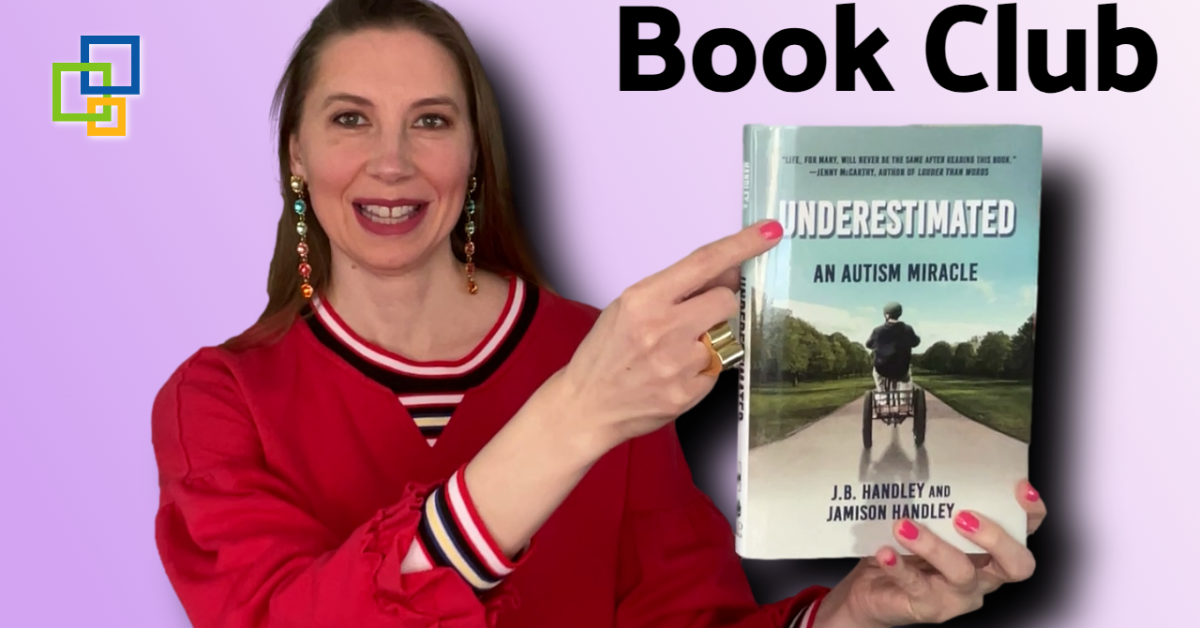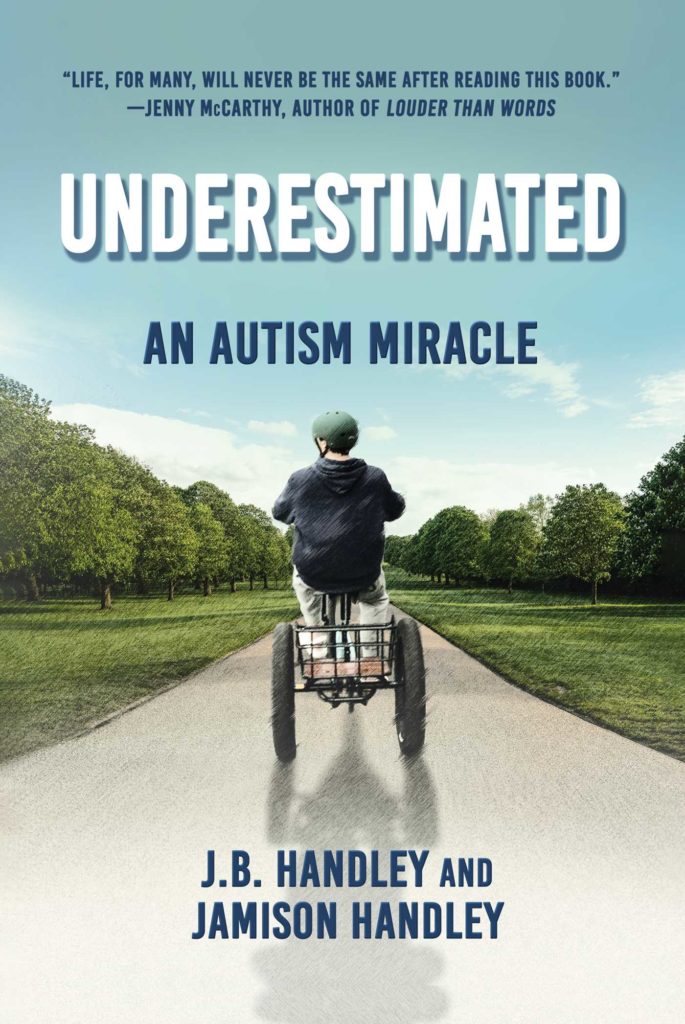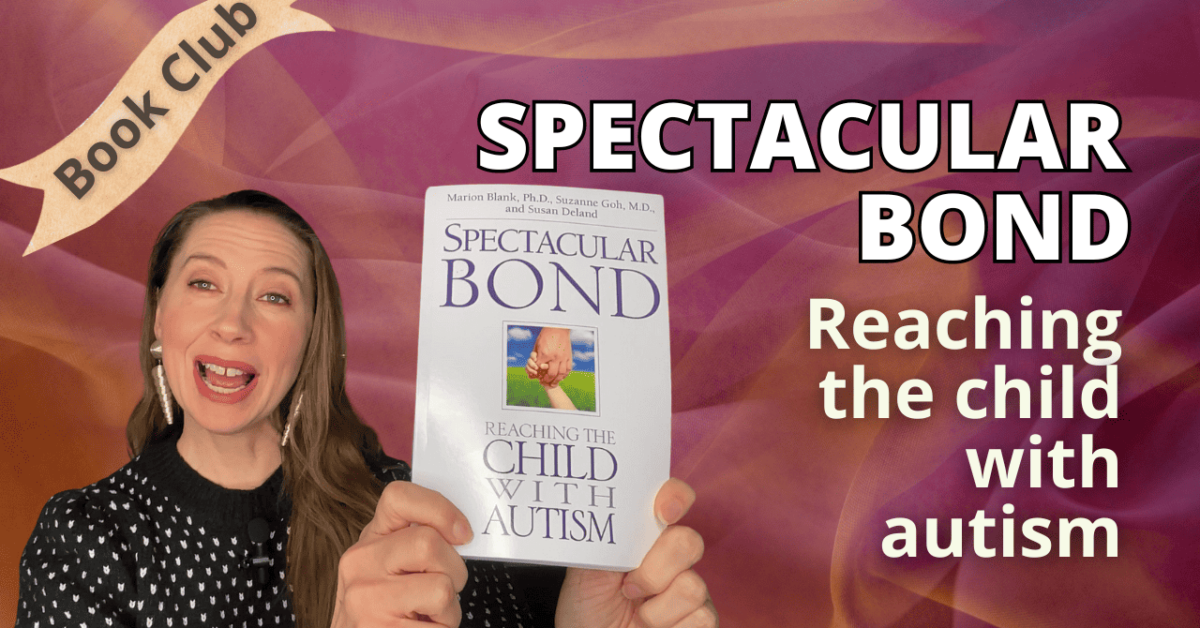“Presuming confidence of all non-speakers, which basically means assume every non-speaker with autism is every bit as normal and smart as any other kid and to treat them accordingly.”
by J. B. Hanley and Jameson Hanley
Let’s get into this book.
This book is about a father and his son who has autism. And he starts out the book by saying that his son has “real autism”. And he writes, “at the risk of offending someone on the spectrum reading this book, please withhold judgment until I explain what that means for us. Jaime doesn’t speak. When extremely frustrated he can explode into a fit that ends in self-injury, the kind that has sent him to the emergency room. He has distinct mannerisms and will stim in a way that clearly signals to onlookers that Jaime has a unique disability. He has compulsions that can be hard for him to manage, like tearing leaves into very small pieces. In school, it was clear to Jamie’s teacher that he was kind, sensitive, and able to track and understand many of the things said and going on around him. What’s known as receptor language, although how much he was tracking, no one really knew. Communication has always been Jamie’s biggest challenge, with the exception of a handful of words to get his basic needs met.
Phrases like slower, please, go, car, help, please. Jamie has been a nonspeaker his whole life, despite many different communication methods we and his teachers tried to help him get to speak.”
So as you can hear from his father’s description, Jamie is on the more severe end of the autism spectrum. And so when someone is non-speaking and they have autism many times, people just in general assume that this person is not intelligent. They don’t understand what’s going on. They’re just not capable of understanding life. And so that person gets marginalized right. People don’t believe that they can do high levels of really anything.
Realizing Jamie is Smart
Here’s another passage where the father JB is being, in a way, taught that his son is smart. All this comes when the son is starting to learn how to spell to communicate.
That’s the therapy’s name, ‘Spell to Communicate‘.
And in spelling to communicate, the person uses a pencil, usually, in their hand, there’s a letter board, and they’re doing gross motor skills to spell out their thoughts, and that’s how they communicate. So the person who was teaching Jamie to spell to communicate was explaining that his dad should be practicing, presuming confidence. And it says here
“…Another huge theme that Elizabeth teaches me is the notion of presuming confidence of all non-speakers. Which basically means assume every non-speaker with autism is every bit as normal and smart as any other kid and to treat them accordingly. I aspire to do this with Jamie all the time, but I know I fall short. I don’t know what he understands, and sometimes I don’t make the extra effort to explain everything to him, to try and anticipate his questions, etc. Because I don’t know if he’s tracking any of it. But since Elizabeth explained this presumption of confidence idea to me, I’ve been making the extra effort with Jamie and it feels good. I email her to say this deep dive into S to C (spelling to communicate) has already changed my relationship with Jamie as I’m just giving him the benefit of the doubt that he understands everything.”
Oh my goodness! I definitely get a little emotional reading that because it is so true. I have a very different perspective on autism because I work with parents who are getting their children healthier and the behaviors and symptoms – things completely change. So I know what a child looks like when they’re struggling to have control over their body. I know how intelligent they are, they just can’t show it. And through work, when they get healthier and they can actually show it, their intelligence blows people away. And I’ve seen it so many times that this is such an important lesson. And I know it’s so hard to look at your child who can’t speak, who might just be grunting or yelling or flapping, or just you just look at the person and you say, I have immense love for you, but I have no idea how you could actually be functioning in all of that. And it is so hard to have that presumption of confidence because you only see the present. You’re not able to understand what this person could be when things change. And this is something that is really important in this book.
I would say the whole central theme of this book is presuming confidence and almost the guilt that this father feels for learning how intelligent and how functioning his son really is. But that his body is so hard to control and presuming competence, I know is so hard. But that kind of like little intuition, that little voice in your mind that is saying there is someone in there. Listen to that voice because that voice is true. This father learned after 17 years how smart his son actually is and how capable and how understanding of everything going on and how brilliant! Ah! It’s such a difficult journey but hopefully, this post can help you believe even when you’re seeing something that would make you doubt that belief. Just keep believing.
And so this passage here is about when Jamie’s son is learning to do the spelling to communicate. And the therapist is saying, When I teach kids to do this therapy, I like it to be relevant. I like the information to be fun. I like it to be joyful for the actual child. So the lesson was about popcorn. And they were going talking about popcorn and movies and Cracker Jacks. And the therapist asked Jamie, what are we talking about? And Jamie, the 17-year-old boy, pokes popcorn. He spells the word. And the father says, I’m confused. I didn’t even know he could spell – at all. Just could you imagine that? Think of your child or someone else’s child who you think is not functioning whatsoever. You think they can’t spell, you think they can’t read, you think they can’t do any math, right, because they haven’t been able to demonstrate it. But when the child actually gets a technique that allows showing how much he knows – he’s spelling! And it goes on and on about this dad just sitting there being blown away by how much information Jamie knows and just how amazing of a child he is and how smart he is and how he had been learning all along. Just nobody protected his brilliance and let him show how much he knows. And this is a really great passage. Oh, my goodness.
Jamie’s Outburst
For all the times your child does something and it’s like jarring. It’s just like, why did you do that, this passage? Let me read this.
“Earlier in the session, somewhat out of the blue, Jamie had an emotional outburst and bit his arm. This is something we see Jamie do during times of anxiety and frustration. I’d say perhaps 20 percent of the time. We have a pretty good idea of why Jimmy is frustrated, but the other 80% we are only left guessing and soothing him, hoping the mood passes soon. It’s incredibly frustrating to not know why Jamie is having a hard time. And for the first time in 17 years, he’s able to answer the question, what are you feeling right now, Jamie? What he spelled out is ‘Worried about leaving here and returning to three boards only’ “.
That’s the reason why he had an emotional outburst. Emotional outbursts in autism aren’t just for no reason, there’s always some type of frustration. And what he was learning was how to spell with one board as opposed to three. And as he was in the lesson in doing this, he started thinking about, wait, when I go home, I’m going to have to go to three boards again and I’m not going to be able to communicate the way I can now. And it’s so much easier and it’s so much better doing this way that he all of a sudden right. It seemed like out of the blue he got frustrated and bit himself, but it was because he was scared. He had this fear of not being able to communicate as well as he is now. And there’s always a reason for those outbursts, always. And just like the dad said, 20% of the time we knew, 80% we were guessing. And the more and more your child can communicate, the more they can explain, and then the more it makes sense, right?
Doesn’t that make sense? Imagine if you couldn’t communicate and you had three boards, which took a lot of time and you had one board, right? Just think about that. Would you actually bite yourself because you’re like, oh, my gosh, this is going to come to an end. And this is the way I communicate.
It makes sense when Jamie can actually explain why he’s upset. And then the great thing is the parents can soothe him and know exactly why they’re doing what they’re doing.
Controversy Regarding Facilitated Communication
And this last passage the dad is writing about, like reflecting. So he writes “What Jamie is doing now on the letterboard flies in the face of everything that BCBA’s are taught to believe. They’re taught that kids like Jamie who are non-speakers need ABAs to help them navigate the world. The BCBAs answer for Jamie’s miracle – it’s not his words on the boards, it’s the communication partner working with him. When I first heard this, I was astonished by how preposterous this was. It’s a bit like telling my wife she didn’t birth our three kids. Why even argue with someone who says or thinks something that ridiculous? Unfortunately, BCBAs carry a lot of weight in the autism world, so their point of view, no matter how ignorant, can actually damage the credibility of S to C.”
And there is a controversy. 10-20 years ago or so, there was something called facilitated communication, and that’s when the arm was supported of someone who was communicating and spelling and things like that. And there’s a big, long controversy about this. But the conclusion was that the people with autism were not actually communicating, that it was the person holding the hand that was actually doing the communicating. And so that’s why a technique like this is controversial.
How Spelling to Communicate is Different
However, S to C, how they’re different is yes, they’re doing the spelling and all of that, but the person is only holding the letter board. They’re not moving. That arm isn’t supported by anyone else. So it’s much clearer now that the person with autism is the one who’s actually spelling because nobody is touching them. There’s no facilitation whatsoever.
There might be encouragement and verbal prompts, things along those lines, but the person with autism is actually doing the physical motion themselves. And so that’s why this technique, the S to C, is controversial. But it’s not the same as the previous version of facilitated communication. It is completely unfortunate that people with autism are marginalized as much. It’s astonishing.
It’s so outrageous. It’s even hard to fathom how marginalized is someone who can’t speak.
It’s just not right whatsoever. And there are so many different spellers out there who have severe autism, right? So their behaviors haven’t changed, but they’re able to communicate. They’re able to show how intelligent they are. And I really hope more and more of these wonderful people write books and show that people with autism, regardless of their behaviors, are intelligent.
They’re tuned into their environment. They want to learn, they want to have a great life. And this book is one example of many of that situation and of that ability for your child.
There’s so much inside there and I know it’s frustrating to have to try all these different things to figure out what works.
But keep going.





